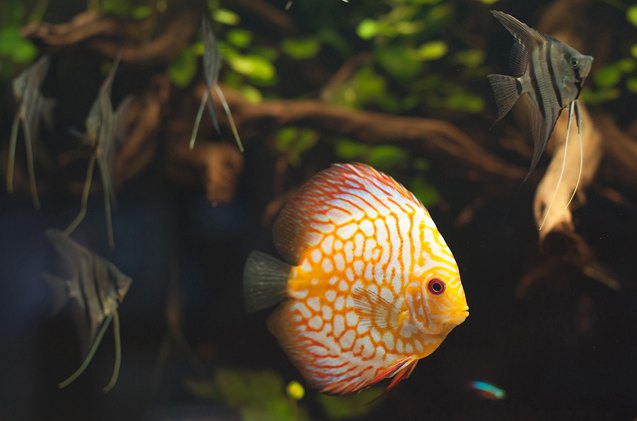What You Need to Know About the Nitrogen Cycle


Even if you have never kept an aquarium of your own before, if you know anything about the aquarium hobby you have probably heard the terms “cycling” or “new tank syndrome” tossed around. The term “cycling” refers to the nitrogen cycle and “new tank syndrome” is what happens when novice aquarium hobbyists fail to grasp the importance of the nitrogen cycle. If you want to cultivate a thriving aquarium, you need to learn the basics about the nitrogen cycle before you begin.
Related: What are the Most Difficult Aquatic Plants to Grow?
What is the Nitrogen Cycle?
In the simplest of terms, the nitrogen cycle is simply the process through which beneficial bacteria break harmful waste products down into less harmful substances. All living things, including your aquarium fish, produce waste. The waste your fish produce directly is combined with other waste products like uneaten fish food and decaying plant matter in your aquarium. Over time, this accumulation of nitrogenous wastes starts to break down in a process that produces ammonia (NH3) as a byproduct. Ammonia is highly toxic to aquarium fish, even in very low concentrations, so it must be converted into less harmful substances.
That is the job of beneficial bacteria. These bacteria take part in the breakdown of wastes, converting harmful substances like ammonia into less harmful substances. Some species of bacteria break ammonia down into nitrite (NO2-) and other species break that nitrite down into nitrate (N03-). The process through which ammonia is converted into nitrite and then into nitrate is the nitrogen cycle. This process is also sometimes referred to as biological filtration and it is essential for a healthy aquarium.
Related: Top 3 Substrates to Use in Planted Aquariums
Tips for Maintaining Biological Filtration
The only way to maintain proper biological filtration in your aquarium is to establish a colony of beneficial bacteria. If you add fish to a new tank before the bacteria have time to colonize it there will be no system in place to convert the ammonia produced by the breakdown of wastes into less harmful substances. As a result, the ammonia levels in your tank will climb too high and your fish could suffer from ammonia poisoning and die. This is what experienced aquarium hobbyists are referring to when they talk about “new tank syndrome”.
In order to avoid this problem you need to make sure that your tank has fully cycled before you add any fish – the only way to know if your tank has cycled is to test the water. Shortly after you set up your aquarium you will notice a spike in ammonia levels followed by a spike in nitrite levels. When you test the tank water and find that both the ammonia and nitrite levels have returned to zero and that you have a positive reading for nitrate, you will know that your tank has cycled. To cycle a new tank you have several options – you can “seed” the tank with fish food to feed the bacteria or you can use water, gravel, or filter media from an established tank to transplant live bacteria. You can also purchase live bacteria online or in your local pet store to use in cycling your tank.
Once you have established a sufficient colony of beneficial bacteria in your tank you then need to maintain that colony. Performing routine water changes is an important part of tank maintenance but you want to avoid changing too much of the tank water at once or you could end up killing most of your beneficial bacteria – stick to water changes under 30% of your tank volume. You also want to be careful about cleaning your filter too thoroughly because that is where a majority of your beneficial bacteria will live.
Without beneficial bacteria in your aquarium there is no way your water chemistry will remain stable enough to support your fish. Biological filtration is an essential but often overlooked part of keeping an aquarium and it is something every aquarium hobbyist should learn about in depth before starting their own tank.

Kate Barrington is the loving owner of two cats (Bagel and Munchkin) and a noisy herd of guinea pigs. Having grown up with golden retrievers, Kate has a great deal of experience with dogs but labels herself a lover of all pets. Having received a Bachelor's degree in English, Kate has combined her love for pets and her passion for writing to create her own freelance writing business, specializing in the pet niche.
More by Kate Barrington























